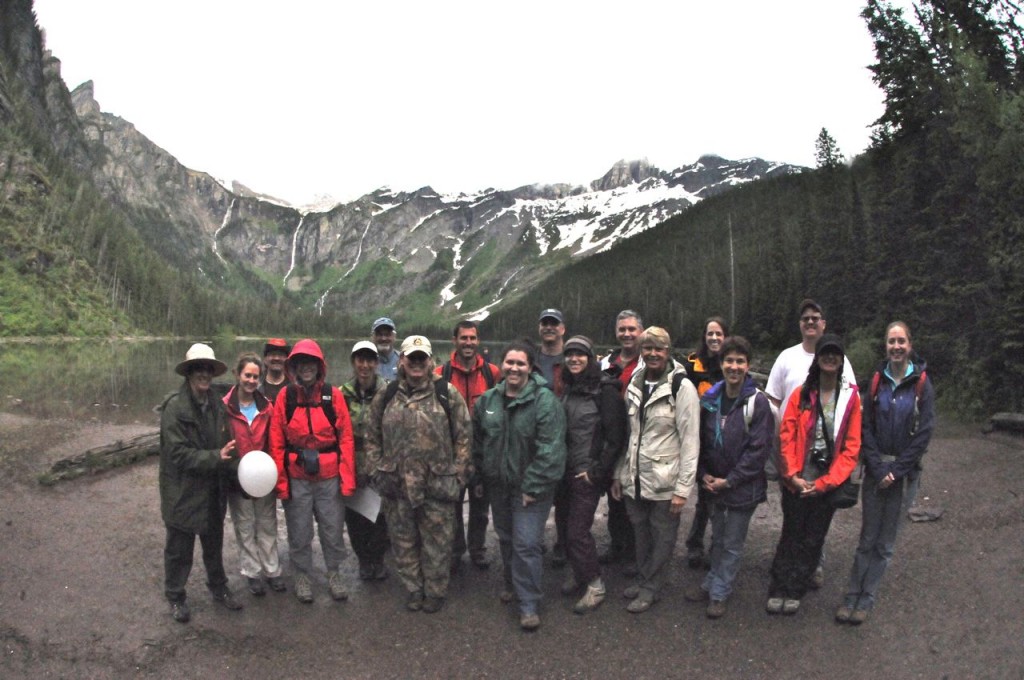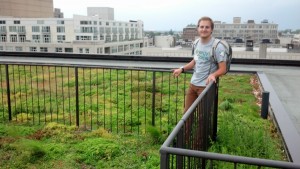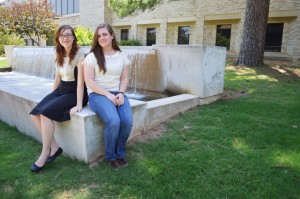In a world dominated by smart phones, pop music, and new-found appeal in members of the opposite sex, how do you grab the attention of a 7th grader? When your topic is as serious as climate change, it has to be fun. As soon as students hear they will be making flubber, they’re hooked. Flubber… even the word is fun! Bouncy, slimy, and squishy, flubber is a polymer (a substance exhibiting both the properties of a solid and a liquid) made by mixing white glue, borax (laundry detergent), and water. Through my research on climate change education as an Energy Corps member at Bitter Root Resource Conservation and Development (RC&D), I discovered the lesson plan “Modeling a Moving Glacier,” which required the use of flubber. I modified the plan to fit my own needs and created curriculum centered on outdoor education events at which I have presented to nearly 600 students throughout the Bitterroot Valley in the last two years.
For the activity, the flubber is made and then packed into the top of a two-foot long, large diameter PVC pipe cut in half lengthwise. The PVC pipe represents a valley, while the flubber becomes the model for a moving glacier. Students then use scientific theory to make hypotheses on their expectations for the “glacier” regarding how glaciers move, speed factors, and melt. Discussion focuses on the causes, indicators, impacts, and solutions to climate change. Making flubber is a messy and entertaining experience that students of any age can’t wait to get their hands on. Showing kids the concept of climate change in this way is hard work. You will get dirty and your kids will throw flubber at each other. But they become involved. What they learn sticks with them. And they teach others to learn about and care for their environment. Appealing to a 7th grader may take creativity, but piquing their inner curiosity about their natural world is worth every second of your time.
Living in western Montana provides significant exposure to climate change. We are experiencing a multiple-year drought, Mountain Pine Beetles are decimating our forests, and debilitating wildfires saturate our summer skies and tender lungs with smoke and ash every year. Further north, in Glacier National Park, only 25 of approximately 150 glaciers remain. Because of our proximity to the park, glaciers fit extremely well in my quest to appeal to my students. By studying the role of glaciers in mountain ecosystems, students learn to make real-world connections:
- This valley was carved by an immense, mobile ice field that scoured the earth as it flowed and receded.
- Glaciers hold 75 percent of our fresh water and provide much needed storage that benefits every living creature from the fish to the farmer during melt-off in the hot, dry summer months.
- Glaciers are melting at unprecedented rates and scientists have proven a significant correlation between the increase in the amount of carbon dioxide in the atmosphere and temperature increases since the beginning of the Industrial Revolution.
- Human activities are playing a direct role in the rapid progression of climate change.

By revealing the science of climate change to students, they begin to more clearly understand cause and effect. And by using flubber to simulate moving glaciers, you are providing a hands-on approach to learning that inspires students to take action. The most important aspect in this teaching is to instill hope in your students. Offer children ways to get involved and become part of the solution. In doing so, we are focusing on the positive and not enabling the overwhelming topic of climate change to provoke feelings of fear, denial, or hopelessness.
In reward for my efforts, I was one of twenty nation-wide educators chosen to attend the prestigious 2013 Climate Change Teacher Workshop hosted by the Glacier Institute in Glacier National Park! I spent the last week of June immersed in the wonder and beauty defined by the namesake of this heaven on earth. I attended insightful, hopeful lectures presented by scientists and educators passionate about spreading their wealth of knowledge. I collaborated with educators from all over the country to overcome teaching the controversy that is climate change. My experience at the park was inspiring and fulfilling and my promise is to bring a piece of that to my students.
My participation in the Climate Change Teacher Workshop resulted in the resources, knowledge, and encouragement to create and implement a Climate Watch Project for my organization, Bitter Root RC&D. The project is a climate change education component of Bitter Root RC&D’s 2014 Bitterroot Culture Camp. This camp hosts 25 middle school students from the Bitterroot Valley, the traditional homeland of the Salish American Indians, and tribal and non-tribal youth from the Flathead Reservation. Students will increase their understanding of and respect for each other and the land while camping together for four days on the Bitterroot National Forest. Through their involvement with the Climate Watch Project, youth will gain the knowledge and life skills necessary to contribute to the stewardship and conservation of their planet. Additionally, students will step into leadership roles and take action by completing a service learning project. They will commit to meaningful environmental stewardship as they create an interpretive trail and campground display board offering information on the impacts of climate change. And, yes of course, we will be making flubber!
My hope for a healthy, sustainable world lies with our students. Through them, humans can change their consumptive greed to resourceful pride. Educators possess the key to unlock these lost connections to our surrendering planet. What our children learn today will result in their future. Younger generations need education urging them to conserve and protect their natural world. By empowering students, we are initiating those conversations that spark innovation and break routine. So, if you’re looking for a new way to reach your students, try tossing them a ball of flubber.
 Jessica Jenne has lived in Montana since she was two months old and considers herself a Bitterroot Valley native. She joined Energy Corps in pursuit of invaluable experience and the opportunity to provide assistance to her beloved community. She has worked to promote a small community college in the valley where she lives, along with establishing their recycling program. She enjoys skiing, kayaking, camping, hiking, and bike riding with her family. Through Jessica’s work with Energy Corps she hopes to become a knowledgeable advocate of sustainability, providing education to communities in need.
Jessica Jenne has lived in Montana since she was two months old and considers herself a Bitterroot Valley native. She joined Energy Corps in pursuit of invaluable experience and the opportunity to provide assistance to her beloved community. She has worked to promote a small community college in the valley where she lives, along with establishing their recycling program. She enjoys skiing, kayaking, camping, hiking, and bike riding with her family. Through Jessica’s work with Energy Corps she hopes to become a knowledgeable advocate of sustainability, providing education to communities in need.








